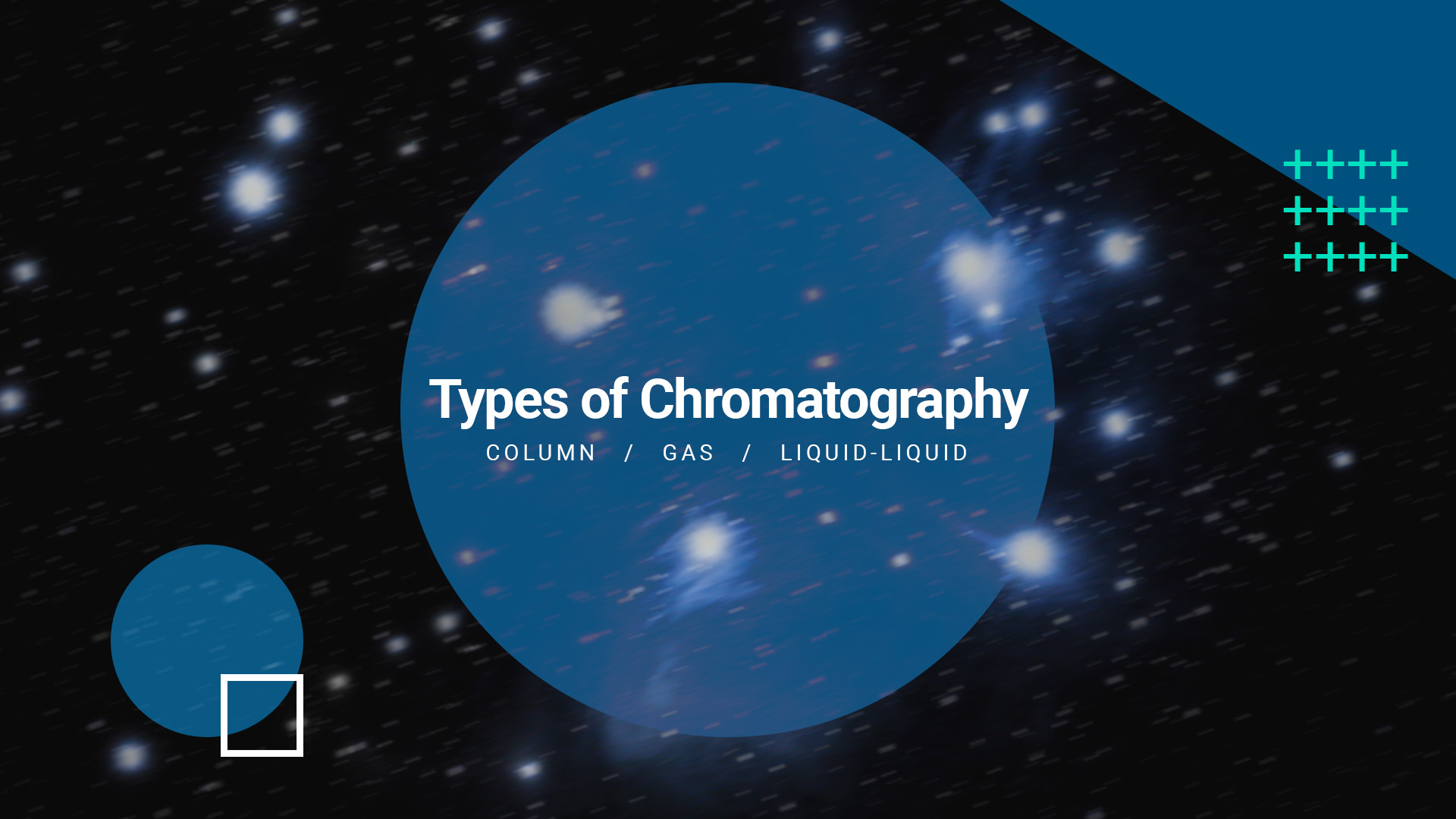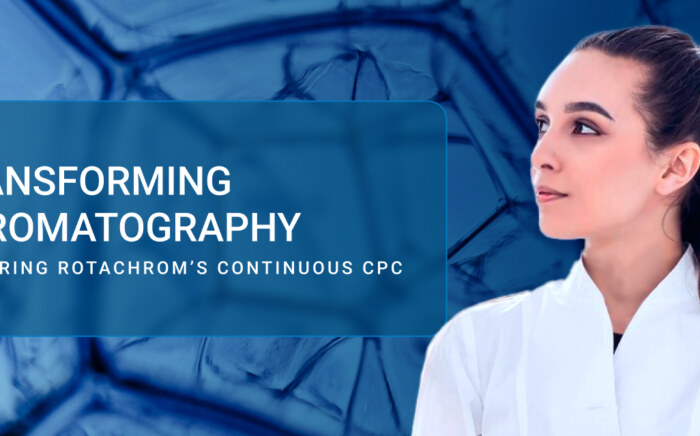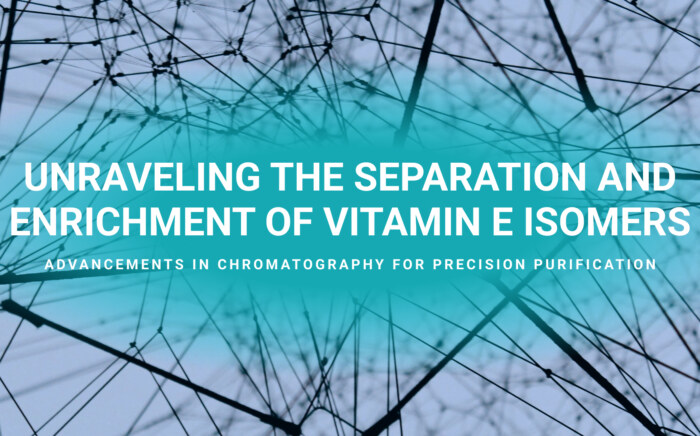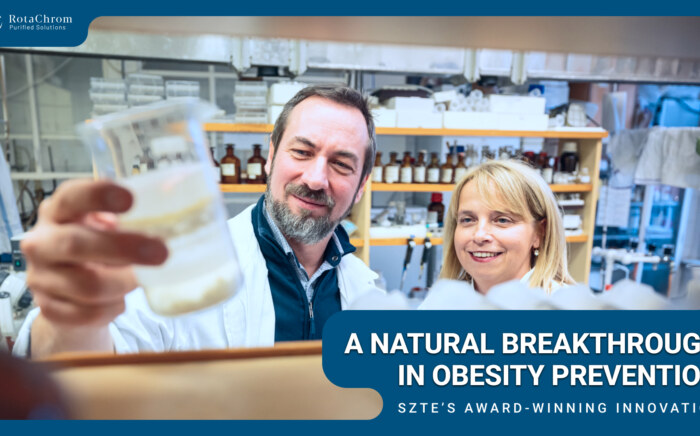Increasing separation efficiency by pH adjustment in Centrifugal Partition Chromatography
NewsChromatography is a separation technique that is used to isolate, purify, and analyze compounds in a mixture. It is a versatile and widely used method in a variety of fields, including chemistry, biology, environmental science, and food science. There are several different types of chromatography, each with its own unique characteristics and applications, including gas chromatography and liquid chromatography.
Column Chromatography
One of the most common traditional solutions, column chromatography is a type of chromatography that uses a stationary phase, typically a solid or gel, and a mobile phase, typically a liquid or gas, to separate and purify compounds. The stationary phase is packed into a column, and the mixture to be separated is introduced onto the top of the column. The mobile phase is then passed through the column, and the compounds in the mixture are separated based on their affinity for the stationary phase. Column chromatography is a versatile technique that can be used to separate a wide range of compounds, including proteins, nucleic acids, and small molecules.
Gas Chromatography
Gas chromatography (GC) is a powerful and widely used technique for the separation and analysis of volatile compounds. It is a type of chromatography that uses a gas as the mobile phase and a solid stationary phase to separate and purify compounds in a mixture.
One of the key features of GC is its ability to separate and analyze volatile compounds with high sensitivity and accuracy. This is achieved through the use of a finely porous stationary phase, such as a thin film of liquid or solid coating on a solid support, and a high-pressure carrier gas to drive the mobile phase through the column. The separated compounds are then detected using a variety of techniques, such as flame ionization detection or mass spectrometry.
GC is commonly used to analyze a wide range of volatile compounds, including pharmaceuticals, food additives, and environmental contaminants. It is a versatile technique that can be used in a variety of applications, including quality control, drug development, and forensic analysis.
In a GC system, the sample to be analyzed is first vaporized and introduced onto the top of the column using a sample injector. The mobile phase, typically a carrier gas such as helium or nitrogen, is then passed through the column under high pressure, and the compounds in the sample are separated based on their affinity for the stationary phase. The separated compounds are then detected using a detector, which produces a signal proportional to the concentration of the compound in the mobile phase.
Some of GC’s advantages are:
- High sensitivity and resolution, which allows it to separate a wide range of volatile compounds with a high degree of precision
- Possibility to be upgraded to a mass spectrometer (MS), which is used to determine the mass-to-charge ratio of ions
- Use with a variety of detectors and injectors, which enable GC to be adapted to many different types of applications
However, GC comes with several disadvantages as well:
- One of the main disadvantages is that GC is limited to the analysis of volatile and thermally stable compounds. Non-volatile compounds and those that are not thermally stable cannot be separated using GC, making other chromatographic techniques such as liquid chromatography (LC) more appropriate for these types of samples.
- The detectors used in GC (except for mass spectrometry), are destructive, meaning that the sample is consumed in the process of analysis, which can be a problem if the sample is valuable or in limited supply
- The selectivity of GC is also lower compared to other chromatographic techniques such as centrifugal partition chromatography (CPC)
- GC requires the use of hydrogen gas for the flame, which is highly flammable and therefore requires additional precautions to be taken when using the technique
Overall, while gas chromatography is a powerful technique that offers high sensitivity and resolution, it has some limitations and may not be the best option for certain types of samples. It’s important to consider the sample characteristics and the specific analysis requirements before selecting the appropriate chromatographic technique.
Liquid-Liquid Chromatography
Liquid-liquid chromatography (LLC) is a separation technique that is used to isolate, purify, and analyze compounds in a mixture. It is a type of chromatography that uses two immiscible liquid phases, a stationary phase and a mobile phase, to separate and purify compounds.
LLC is a versatile technique that can be used to separate a wide range of compounds, including small molecules, proteins, and other biological compounds. It is particularly well-suited for the separation and purification of compounds on a preparative scale, due to its high yield, throughput, and productivity.
One of the key features of LLC is its use of a liquid stationary phase, which is typically packed into a series of interconnected cells. The mixture to be separated is introduced into the cells, and the mobile phase is passed through the system. The compounds in the mixture are separated based on their affinity for the stationary phase.
LLC has several advantages over other chromatographic techniques, including:
- Low sample loss
- High output capacity (in RotaChrom’s soltuions, up to 20 kg/day)
- The ability to reuse the stationary phase after a rinse.
- LLC is cost-effective and environmentally friendly, due to solvent management
Overall, LLC is a powerful and versatile technique for the separation and purification of compounds. Its simplicity, efficiency, and cost-effectiveness make it a valuable tool in a variety of fields. If you feel like LLC may be interesting to you, we recommend learning about centrifugal partition chromatography.
CPC is a scalable liquid-liquid solution that can be adapted to many different environments. RotaChrom has made significant improvements in chromatography with the development of the Industrial Scale Centrifugal Partition Chromatography (iCPC) method. Unlike traditional liquid chromatography, this novel system does not rely on a solid stationary phase for precision molecular separation and has been found to be significantly more effective in terms of yield and purity. The iCPC platform is designed to be cost-effective and requires fewer steps than conventional methodologies, making it a versatile solution to purification challenges across multiple industries.
Resources
To learn more about CPC and chromatography in general, click any of the links below.



